#ellsworth fredericks
Photo



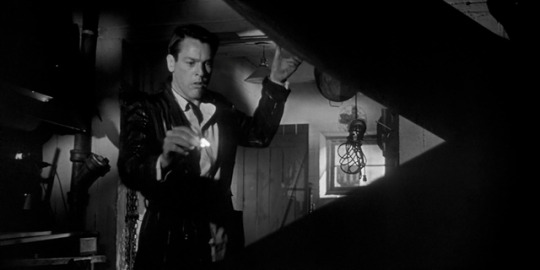





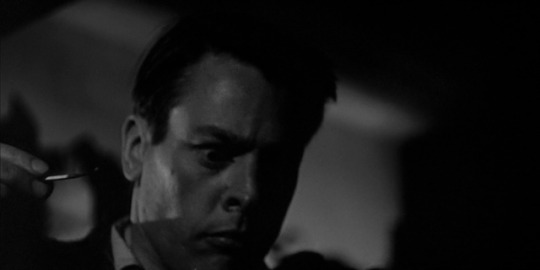
Invasion of the Body Snatchers (Don Siegel, 1956).
#invasion of the body snatchers#don siegel#kevin mccarthy#dana wynter#ellsworth fredericks#robert s. eisen#ted haworth#joseph kish
33 notes
·
View notes
Text





The final scene of General Scott leaving a building, getting into his car, and telling his driver to take him home, was shot in Paris, France while John Frankenheimer and Burt Lancaster were filming The Train (1964). John Frankenheimer explains this in the 1999 DVD commentary that the doors of the building are all propped open so the French names of the shops are not visible.
Seven Days in May
— 1964. dir. john frankenheimer, cin. ellsworth fredericks. quote via IMDb.
6 notes
·
View notes
Text
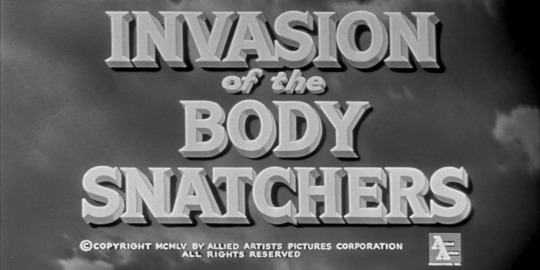





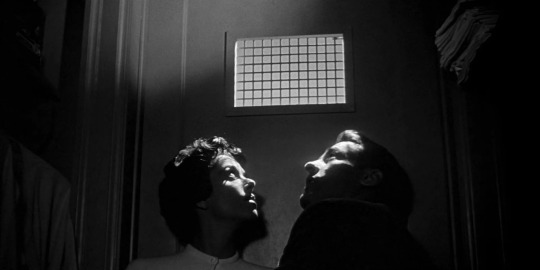

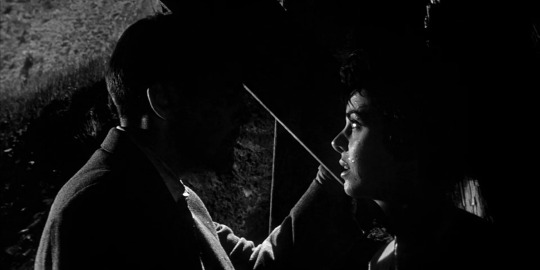
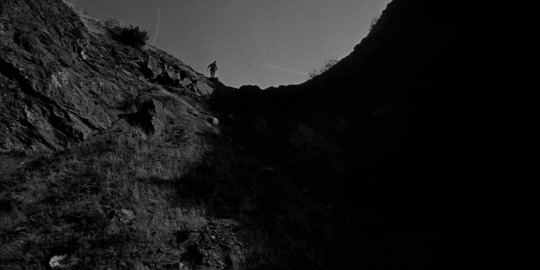
🎞️Invasion of the Body Snatchers (1956)
🎥Don Siegel
📷Ellsworth Fredericks
#TheMostBeautifulShotsInMovie#Shot#Movie#Peliculas#Cine#Cinema#Pelicula#Movies#OnePerfectShot#Cinematography#TerrorMovies#OctubreDelTerror#DonSiegel#InvasionOfTheBodySnatchers#KevinMcCarthy#DanaWynter#LarryGates#KingDonovan#CarolynJones#JeanWilles#TheBodySnatchers#LaInvasionDeLosUsurpadoresDeCuerpos
1 note
·
View note
Text

The Light in the Forest (1958) was photographed by Ellsworth Fredericks. Ellsworth is thought to be the only black cinematographer in Hollywood's golden age. There is a photo of a black man looking through a device next to John Frankenheimer on the set of Seven Days in May. It is unclear if the man is Ellsworth. Perhaps Ellsworth is the man standing by the door. There are two other images of Ellsworth, but he is white in both of them.
Ellsworth's two entries among my best 1001 are Invasion of the Body Snatchers and Seven Days in May.
0 notes
Text

Seven Days in May
Directed by John Frankenheimer
Photographed by Ellsworth Fredericks
1 note
·
View note
Text
Joseph Blake Smith Arkansas | Influences of Hard Edge Painting
The term “hard-edge painting” refers to an oil painting method that uses a variety of painting techniques. It is as associated with several movements.
Four Abstract Classicists
Hard-edge painting is not so much a movement in and of itself as it is a trend that was first noticed by many artists who banded together to hold an exhibition of this art form in 1959 at the Los Angeles County Museum of Art called “Four Abstract Classicists.” The hard-edge painting was developed as a reaction to some of the forms of Abstract Expressionism. John McLaughlin, Karl Benjamin, Lorser Feitelson, and Frederick Hammersley were the artists who took part in this exhibition.
Joseph Blake Smith Arkansas British curator and critic, gave the exhibition the additional name “California Hard-edge” when it later traveled to Great Britain. Peter Selz and Los Angeles Times art critic Jules Langsner, were instrumental in bringing them together. Artists for the first representative exhibition of this kind of painting actually invented the phrase “hard-edge painting” in 1959.
Before that exemplary exhibition, American artists Josef Albers (1888–1966), a Bauhaus artist who start his series of oil paintings at Asheville, North Carolina’s Black Mountain College in 1949, and Ellsworth Kelly’s 1949 piece from his Private Collection, “Window, Museum of Art, Paris,” are credit with creating hard-edge paintings. Another early illustration is “Counter-Composition V” (1924) by Dutch painter and De Stijl movement pioneer Theo van Doesburg (1883–1931).
PROS AND CONS
Advantages of REACTIVATION:
Once traditional acrylic paint is dry, unlike watercolors (another water-based paint), it stays on the support. This facilitates painting additional layers on top of existing ones.
Cons:
The paint cannot remove or change after it has dried.
2. Advantages of DURABILITY:
It seems that contemporary acrylic paint is more malleable and long-lasting than oil paints.
Cons:
Contemporary acrylic paint is more recent than classic acrylic paint. Although efforts are made to demonstrate their lifespan, nothing can be conclusively demonstrated until enough time has passed.....
For More
#blake smith little rock arkansas#j. blake smith#blake smith arkansas#blake smith little rock arkansas appearing#joseph blake smith little rock arkansas#joseph blake smith little rock ar#blakesmithlittlerockarkansas#blakesmitharkansas#j blake smith ar#blake smith ar
0 notes
Text



Invasion of the Body Snatchers, 1956. Don Siegel. Ellsworth Fredericks.
#cine#film#cinema#film stills#cinephile#SciFi#horror movies#alien invaders#Body Snatchers#Pod People
0 notes
Audio
They're here! And you're next!! Your deadicated hosts enter 1956 with INVASION OF THE BODY SNATCHERS from director Don Siegel and producer Walter Wanger, based on the Jack Finney novel.
The film is often viewed with a Cold War, Red Scare lens, but is it really Communism we're supposed to be afraid of?
Context setting 00:00; Synopsis 43:38; Discussion 1:00:33; Ranking 1:35:49
#podcast#invasion of the body snatchers#jack finney#don siegel#walter wanger#daniel mainwaring#kevin mccarthy#dana wynter#carolyn jones#king donovan#carmen dragon#ellsworth fredericks#allied artists#monogram pictures#communism#mccarthyism#nostalgia#horror#sam peckinpah#hollywood blacklist#joseph mccarthy#conformity#anti-conformity#anti-communism#sci fi#thriller#pod people
14 notes
·
View notes
Photo










the power (us, haskin 68)
8 notes
·
View notes
Photo

Invasion of the Body Snatchers (1956)
#1950s#actor kevin mccarthy#dir don siegel#dp ellsworth fredericks#cat horror#cat sci fi#cat melodrama#cat mystery#american#monochrome#sweat#dirt#water#shadow#invasion of the body snatchers 1956#invasion of the body snatchers
2 notes
·
View notes
Photo









HELEN LUNDEBERG
Unlike her husband, Lorser Feitelson, California hard-edged painter Helen Lundeberg remained committed to figural representation throughout her career. The contours of the analog world remain clearly visible, although they have been subjected to extreme methods of abstraction.
More on Helen Lundeberg
39 notes
·
View notes
Photo










Invasion of the Body Snatchers (Don Siegel, 1956).
#invasion of the body snatchers#invasion of the body snatchers (1956)#don siegel#kevin mccarthy#dana wynter#jack finney#ellsworth fredericks#robert s. eisen#ted haworth#joseph kish
82 notes
·
View notes
Photo

ebay
March 29th, 1930 issue
cover art by John A. Coughlin
Christopher B. Booth, “Bad Blood”
N.D. Marbaker, “Emergency Murder”
Paul Ellsworth Triem, “The Iron Hand”
Albert William Stone, “Bitter Oranges”
Ernest M. Poare, “Timely Torture”
Frederick Ames Coates, “Oiled Disaster”
Alex Barber, “The Symbol of Sin”
Leslie Gordon Barnard, “Doctor! Doctor!”
Seattle Mystery Bookshop
#detective story magazine#john a. coughlin#pulp art#pulp cover#pulp magazine#crime fiction#mystery short stories#christopher b. booth#n.d. marbaker#paul ellsworth triem#albert william stone#ernest m. poate#frederick ames coates#alex barber#leslie gordon barnard
8 notes
·
View notes
Text
1880s Names
A
Boys
Abel, Abraham, Adam, Addison, Adelbert, Alexander, Alfred, Aloysius, Alphonse, Ambrose, Amos, Anderson, Andrew, Angus, Anthony, Anton, Archibald, Art, Arthur, Aubrey, August, Augustine, Augustus, Avery
Girls
Ada, Adelaide, Adele, Adeline, Agatha, Agnes, Alice, Alma, Almeda, Alta, Anastasia, Angeline, Anna, Annabelle, Anne, Arizona, Augusta, Augustine, Aurelia, Aurora
B
Boys
Barney, Benjamin, Bennett, Bernard, Bishop, Bradford
Girls
Beatrice, Bernadette, Bess, Bessie, Beulah, Birdie
C
Boys
Carlton, Carson, Casper, Cassius, Cecil, Charles, Chauncey, Chester, Christian, Christopher, Clarence, Claude, Clement, Clifford, Coleman, Conrad, Cornelius, Curtis
Girls
Camille, Caroline, Catherine, Cecilia, Celestia, Celestine, Celia, Charity, Charlotte, Christine, Claire, Clara, Clarice, Claudia, Clementine, Conception, Constance, Corda, Cordelia, Cornelia
D
Boys
Dallas, Daniel, Darius, David, Dennis, Dewitt, Dorsey, Douglas, Dudley, Dwight
Girls
Daisy, Delia, Della, Delphia, Docia, Dollie, Dolly, Dolores, Dora, Dorcas, Doris, Dorothy, Dove, Dovie, Drucilla
E
Boys
Early, Edmond, Edward, Edwin, Eldridge, Eli, Elias, Elijah, Elliott, Ellis, Ellsworth, Elmer, Elton, Elwood, Emerson, Emery, Emil, Emmett, Enoch, Ephraim, Erasmus, Erastus ,Eric, Ernest, Ervin, Erwin, Eugene, Everett, Ezra
Girls
Edith, Edmonia, Effie, Elaine, Elda, Eldora, Eleanor, Elise, Eliza, Elizabeth, Ella, Elma, Elnora, Eloise, Elsa, Elsie, Emily, Emma, Emmaline, Era, Erma, Erna, Ernestine, Essie, Esta, Estella, Estelle, Esther, Ethel, Ethelyn, Etta, Eudora, Eugenia, Eula, Eulalia, Eunice, Euphemia
F
Boys
Felix, Ferdinand, Francis, Franklin, Frederick, Fredrick
Girls
Fanny, Fay, Felicia, Fern, Fidelia, Flora, Florence, Florida, Francis
G
Boys
Gabriel, Garrett, General, George, Gideon, Giles, Golden, Gregory
Girls
Geneva, Genevieve, Georgia, Georgie, Goldie, Grace, Gwendolyn
H
Boys
Harmon, Harold, Harris, Harrison, Henry, Hollis, Homer, Horace, Howard, Howard, Howell, Hugo
Girls
Harriett, Hattie, Henrietta, Hester, Honora, Hope, Hortense
I
Boys
Irving
Girls
Imogene, Indiana, Iona, Iris, Isadora
J
Boys
Jack, Jackson, Jacob, James, Jasper, Jeremiah, John, Jonathan, Joseph, Josiah, Judson, Jules, Julian, Junius
Girls
Jane, Josephine, Judith, Julia, Julie, Juliet, June
K
Boys
Kenneth
Girls
Kathleen
L
Boys
Lawrence, Lawson, Leander, Leonard, Lewis, Lionel, Logan, Lucien, Lucius, Luther, Lyman
Girls
Lacy, Lillian, Lilly, Louise, Lucia, Lucille, Lucinda, Lucretia, Lucy
M
Boys
Major, Malcolm, Marcus, Marshall, Martin, Mason, Mathias, Matthew, Maurice, Maxwell, Michael, Miles, Milo, Milton, Monroe, Morgan, Mortimer
Girls
Mabel, Madeline, Magnolia, Marie, Mary, Matilda, Maude, May, Melinda, Mildred, Millicent, Millie, Minerva, Minnie, Miriam, Missouri, Mollie, Mona
N
Boys
Nathan, Nathaniel, Neil, Nelson, Newton, Nicholas, Noah, Noel, Norman, Norris
Girls
Netta, Nettie, Nevada, Nona, Nora, Norah, Norma
O
Boys
Oliver, Oren, Orson, Otis, Otto, Owen
Girls
Odelia, Odessa, Ola, Olive, Ona, Opal, Ophelia, Ora, Orpha, Ottilie
P
Boys
Patrick, Percival, Percy, Peter, Phillip, Pierce, Pleasant
Girls
Pansy, Parthenia, Patience, Pearl, Penelope, Permelia, Philomena, Phoebe, Polly, Priscilla, Prudence
Q
Boys
Quincy
R
Boys
Raymond, Richard, Richmond, Robert, Rodney, Roger, Ross
Girls
Rita, Rosalie, Rose, Rowena, Ruby, Ruth
S
Boys
Samuel, Seymore, Sidney, Silas, Simon, Solomon, Stanley, Stephan, Sterling, Stewart, Sylvester
Girls
Samantha, Sophronia
T
Boys
Thaddeus, Theodore, Thomas, Thorton, Tillman, Timothy, Tobias, Truman
Girls
Tennessee, Thelma, Theodora, Theodosia, Theresa, Tillie
U
Boys
Ulysses
Girls
Una
V
Boys
Valentine, Vernon, Victor, Vincent, Virgil
Girls
Vera, Verona, Vesta, Victoria, Viola, Violet, Virginia, Vivian
W
Boys
Walker, Wallace, Walter, Warren, Watson, Webster, Wesley, Wilber, Wilbert, Wilbur, Wiley, Wilfred, Willam, Willard, William, Wilson, Winfield
Girls
Wilda, Wilhelmina, Wilma, Winifred, Winnifred, Winona
Z
Girls
Zella, Zora
#1880s#baby names#sims 4 decades challenge#ts4 historical#This is part one of a series of posts#if you have trouble naming sims especially for the decade and historical challenges feel free to use this as a resource#i went thru the top 1000 names of the 1880s in the ssa name census and picked the ones i liked and hated the least lol#txt
333 notes
·
View notes
Photo


Tarzan and His Mate (1934) was photographed by Charles G Clarke and Clyde De Vinna. Charles was born in Potter Valley, California and had 148 cinematography credits from The Son of Tarzan in 1920 to three episodes of Arnie (1970-71). His other film among the best 1,001 is Viva Villa, Two of his best known films are Mutiny on the Bounty (1934) and Miracle on 34th St.
Clyde was born in Sedalia, Missouri and had 112 cinematography credits from 1915 to four episodes of The Roy Rogers Show (1951-53). Clyde won the first cinematography Oscar for White Shadows in the South Seas (1928). His other film among the best 1,001 is Tarzan the Ape Man.
One of the four other camera operators was Ellsworth Fredericks, the first black cinematographer in Hollywood. His first credit was as assistant cameraman on The Dawn Patrol (1930) with Howard Hawks, and his last as cinematographer was in 1969. Ellsworth was Oscar nominated in 1959 for Sayonara. There is no mention of his being African-American in his imdb entry, and there is only one image from a goggle image search
http://howardhawkshollywoodannex.tumblr.com/post/63619756031/director-john-frankenheimer-and-director-of
2 notes
·
View notes
Photo
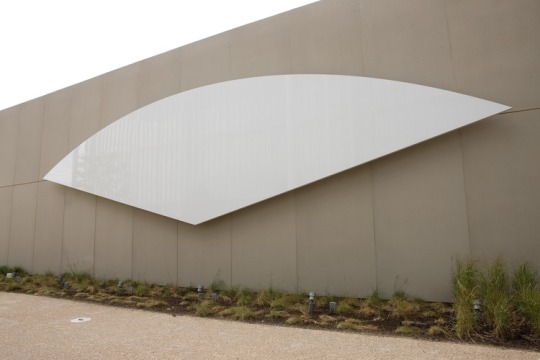
White Curve, Ellsworth Kelly, 2009, Art Institute of Chicago: Contemporary Art
Commissioned by The Art Institute of Chicago in honor of James N. Wood, President and Director, 1980–2004. Charles H. and Mary F.S. Worcester Collection Fund; Emily Rauh Pulitzer; Frederick W. Renshaw Acquisition, Mary and Leigh Block Endowment, and Ada Turnbull Hertle funds; Wirt D. Walker Trust; Joseph Shapiro, Helen A. Regenstein Endowment, Marian and Samuel Klasstorner, and Gladys N. Anderson funds; Getty Foundation, Mr. and Mrs. Charles C. Haffner III, Mr. and Mrs. David C. Hilliard, and Susan and Lewis Manilow; anonymous gift; Mr. and Mrs. John H. Bryan, Stuart D. and Nancie Mishlove, Julius Lewis and the Rhoades Foundation, Margot and Thomas Pritzker, Burt and Anne Kaplan, Frances Dittmer, Marilynn B. Alsdorf, and Mr. and Mrs. Maurice F. Fulton; Robert Allerton Income Purchase and Director's funds; Claire and Gordon Prussian, and Nancy A. Lauter McDougal and Alfred L. McDougal; Capital Campaign General Acquisitions Endowment; Polk Bros. Foundation; Marjorie and Louis B. Susman, Patricia A. Woodworth, Mrs. Robert B. Mayer, Mrs. Jetta N. Jones, and Mr. and Mrs. Gordon I. Segal.
Size: 14 × 54 × 3 feet (4.3 × 16.5 × .08 m)
Medium: Painted aluminum
https://www.artic.edu/artworks/196430/
7 notes
·
View notes